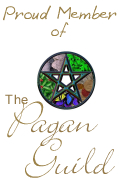
Traditionally, Samhain was time to take stock of the herds and grain supplies. The village would decide which animals were to be slaughtered in order for the people and the remaining livestock to survive the winter. The word bonfire is a contraction of "bone fire" and is a direct translation of the Gaelic tine cnámh.
By casting the bones of the slaughtered cattle upon the flames was a sacrifice for the Celts, as cattle were considered a form of currency. This form of sacrifice was one of the highest offering to the Gods. Often two separate bonfires would be built side by side, so the cattle and other livestock would be driven between the fires for protection and purification.
I encourage you to make a bonfire (even if it is in your tiny cauldron) and accompanying offerings. Suggested sacrifices are paper money, a poem of piece of art you have created and baked goods. If your ancestors are fond of particular foods or items, that would be appropriate as well. In our coven, we make a singular bonfire and leap over it to wild traditional music (pipes, bodhran, fiddle, whistle etc)







No comments:
Post a Comment